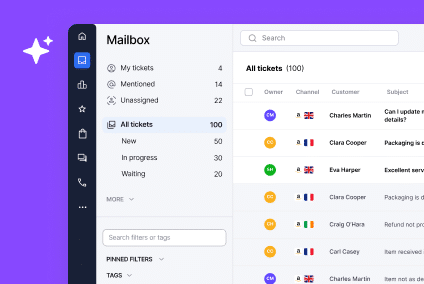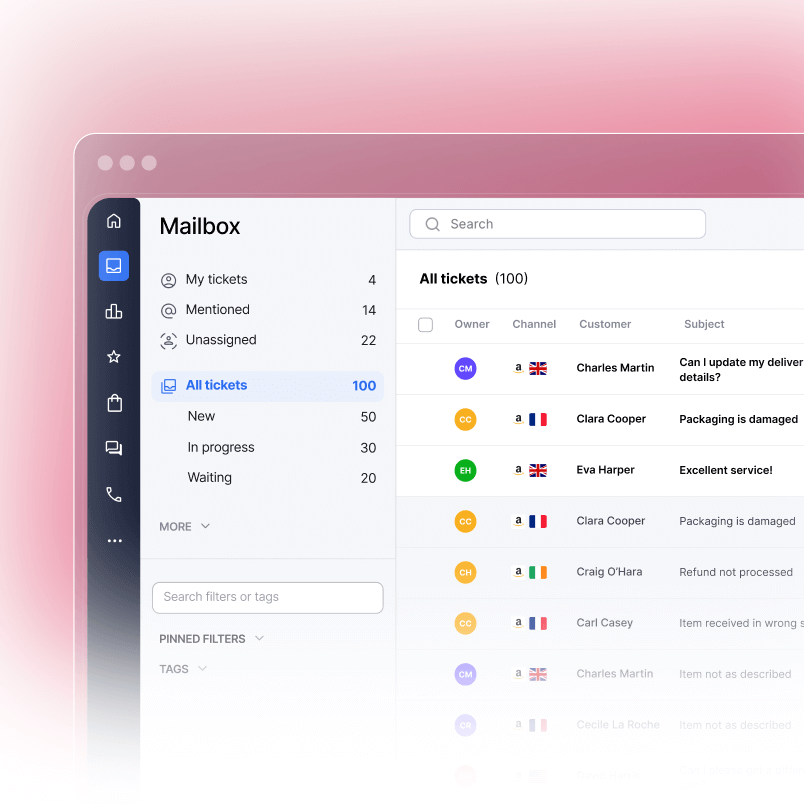Selling on eBay remains a popular way to reach millions of buyers. It doesn’t matter whether you’re running a growing business or simply decluttering your home, understanding how much eBay takes per sale is essential to protect your profits.
In 2025, eBay’s fee structure includes final value fees, insertion fees, promotional costs, and recent additions like the regulatory operating fee. Knowing exactly what you will pay, and how to reduce those charges, has never been more important.
Our guide lays out the complete fee picture, dispels common fee fallacies, and shares practical tips to help you sell smarter and keep more cash in your pocket when selling on eBay.
Let’s kick things off with a look at the main fees involved.
The complete breakdown of eBay fees in 2025
To keep your profits healthy, you need to understand the different fees eBay charges. These fees come in several forms. Some apply when you list items, others when they sell, and some cover promotional tools or regulatory costs. Once you know what each fee means and when it applies, you’ll be able to plan smarter pricing and avoid surprises at checkout.
With these basics in mind, let’s look closer at each fee type.
Final value fees
Final value fees are the biggest chunk eBay takes. It’s a percentage of the total amount the buyer pays, including item price, shipping, and any taxes. Fee rates vary by seller type, category, and country, but typically range from about 7% to 15%. Private sellers in some regions pay tiered rates; for example, 12.8% on sales up to $5,000 and 3% on amounts above that. Business sellers generally pay between 6.9% and 12.9%, plus applicable sales tax depending on category and location.
This fee is automatically deducted. If you sell a gadget for $300 and charge $10 shipping, the fee applies to the full $310. This means it pays to factor the fee into your pricing.
Insertion fees
Insertion fees are what eBay charges when you list an item. Private sellers usually receive 250 free listings per month. After that, a small fee applies for every additional listing. Business sellers with Store subscriptions get more free listings and lower insertion fees.
Listing a high volume of items can lead to insertion fees adding up fast. Keep track of your free listings and subscription benefits to avoid unexpected charges. Note that insertion fees apply per listing and may also apply per category if you list in multiple categories.
Regulatory operating fee
Since 2024, eBay introduced a regulatory operating fee on all sales in certain countries, including the UK and parts of Europe. It’s a small percentage based on the total sale amount including shipping and taxes, plus sales tax. This fee helps cover compliance and regulatory costs.
International selling fees
Selling to buyers outside your registered country incurs an additional fee, usually between about 1% and 2% of the total sale. This fee covers extra costs for international transactions and helps support cross-border selling. The exact rate varies by seller and buyer locations.
Payment processing fees
eBay now manages payments directly. This means there are no separate payment processing fees. Those costs are folded into the final value fee. This simplifies the payment process and reduces surprises when you receive your payout.
Promoted listings fees
Promoted listings let you advertise your items and increase visibility. You pay a fee only when a promoted item sells. The cost depends on your chosen ad rate or flat fee.
Promoted listings can boost sales but must be used wisely. Advertising costs can quickly eat into your margins if left unchecked.
So, that’s the main fee types covered. Next, time to bust some common myths about eBay fees – don’t let these catch you out and mess up your strong seller game.
Don’t fall for these common eBay fee misconceptions
Myth #1: Private sellers don’t pay any fees
So, yes, eBay removed fees for private sellers in some categories, but this isn’t universal. Certain categories still have fees, for instance vehicles. It pays to always check category-specific fees before listing.
Myth #2: All product categories have the same fees
Fee rates vary widely depending on what you sell. For example, electronics often have different final value fees than clothing or collectibles. So, always verify the fee percentage for your specific category to avoid surprises.
Myth #3: Payment processing fees are separate from other fees
Since eBay manages payments directly, payment processing costs are now included in the final value fee. This consolidation makes fee calculations simpler but means the final value fee reflects the full cost.
Myth #4: Insertion fees always apply to every listing
Most private sellers get 250 free listings per month. Business sellers with an eBay Store subscription get even more free listings. Keeping track of these limits can save you money.
Myth #5: Promoted listings guarantee a sale
Promoted listings increase your items’ visibility but don’t guarantee a purchase. Use promoted listings strategically and monitor your advertising costs to ensure a positive return on investment.
Clear as day? Great. Now, how do you keep these fees down?
How can I minimize eBay fees in 2025?
Reducing your fees on eBay doesn’t have to be complicated. With a few smart strategies, you can keep more of your earnings and make selling on eBay more profitable.
Maximize your free listings
Private sellers get 250 free listings every month. Use these wisely by planning your inventory and timing your listings to stay within this limit. If you run a business or sell frequently, consider an eBay Store subscription, which increases your free listings and lowers some fees.
Choose the right Store subscription
eBay offers various Store subscription levels designed for different seller sizes. Upgrading your subscription can reduce your insertion and final value fees, especially if you sell regularly. Compare the costs and benefits to find the best fit for your business.
Offer combined shipping
If you sell multiple items to the same buyer, offer combined shipping discounts. This encourages buyers to purchase more and can save you on shipping costs. It also can help reduce the total fees since fees often apply to each transaction.
Price shipping accurately
Avoid underpricing shipping costs. Charging the true cost protects your margins and ensures you’re not absorbing unexpected expenses. Consider using eBay’s calculated shipping feature to provide fair and precise shipping charges.
List items in the correct category
Placing your items in the right category affects the final value fee you pay. Research your product category carefully and update listings if necessary to take advantage of lower fees in certain categories.
Use promoted listings selectively
Promoted listings can help boost sales, but advertising costs can cut into your profits. Use promotions for items with good margins or for those that need a visibility boost. Track the performance closely to see if the investment is paying off. Use promoted listings wisely to control costs and maximize sales. Keep an eye on other selling costs as part of your overall fee management.
Stay ahead with eBay policy updates
Keep an eye on eBay business policies and fee changes. Being informed means you can adjust your selling strategy early and avoid surprises that could eat into your profits.
Keep an eye on fees regularly
Fee structures and policies can change. Regularly review your selling reports and fee charges to catch any changes and adjust your selling strategies accordingly.
So there you have it, 8 ways to shrink your fees. You don’t need to do these all at once of course, but the more you can do, the better your bottom line.
But what if you could make it even easier with some clever tools? Let’s explore those next.
Essential tools and resources to manage your eBay fees
Understanding your fees is easier when you have the right tools at your fingertips. Several fee calculators and resources can help you estimate and track your eBay costs accurately.
eBay’s own fee calculator
eBay provides a fee calculator on their website where you can input your item price, shipping cost, and category to see an estimate of your fees. This is a great place to start and get an official breakdown.
Third-party fee calculators
There are plenty of reliable third-party fee calculators designed to give you a detailed fee estimate. Some popular options include eBay Fee Calculator UK and SellerBench. These tools often offer more detailed breakdowns, including insertion fees, final value fees, and promoted listing costs.
Spreadsheets and tracking templates
If you prefer a hands-on approach, consider creating or downloading a fee tracking spreadsheet. These allow you to record each sale’s fees and track trends over time, helping you spot opportunities to reduce costs.
Regularly review your seller dashboard
eBay’s seller dashboard provides reports on fees, sales, and performance. Checking this regularly helps you stay aware of changes in fees and spot any unexpected charges early.
Using these tools will give you greater confidence in pricing your items and understanding your profit margins. Knowing your costs upfront will make it a breeze to adjust your strategy and maintain profitability.
Mastered your fees? Now the real scaling begins
So let’s fast forward to next month. You’ve got your fees sorted and your profits protected – nice.
For a lot of sellers, it’s everything after the sale that gets messy. We hear it from sellers all the time: the customer messages are piling up. The return requests are coming in thick and fast. Then there are the review headaches.
But then they start using eDesk.
It pulls all your messages into one smart inbox, no matter where you sell.
It uses AI to help you reply faster, with responses based on your past conversations and order data.
And it connects directly with your eBay listings, orders, and tracking, so you can handle it all from one place.
Book a demo to discover how eDesk helps sellers save time, stay organized, and deliver five-star service every time.




